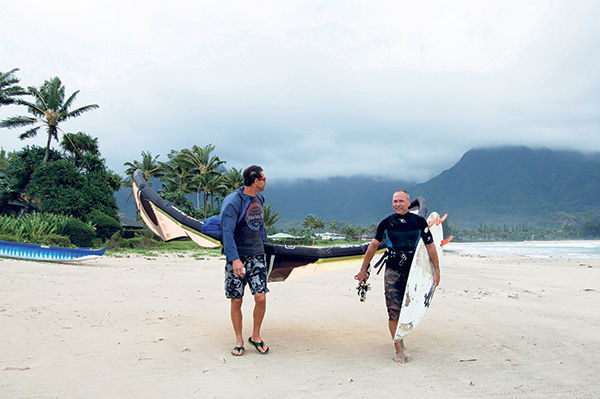HANALEI — Dave Andrews moved to Kauai in pursuit of Hanalei’s world class surf. Seven days a week he can be found at Black Pot Beach Park with a surfboard tucked under his arm. “I am a water man,” said
HANALEI — Dave Andrews moved to Kauai in pursuit of Hanalei’s world class surf. Seven days a week he can be found at Black Pot Beach Park with a surfboard tucked under his arm.
“I am a water man,” said the 59-year-old Princeville resident. “That’s my life. That’s why I came here.”
Concerned by all the buzz about changes coming to his prized paddle out spot, Andrews attended a community meeting at Hanalei Elementary School Tuesday night ready to share his opinions.
Ensuring that beach parking continues to be allowed, he said, is his biggest priority. But he acknowledged that on busy days too many cars try to pack onto the sand. That, he said, can be problematic.
“When the rows of cars are three deep, that’s too many,” he said. “I think there needs to be a person who looks and pulls the rope when there’s too many cars and directs people to park in an overflow lot. The problem right now is there’s nowhere else to park. We need more parking away from the beach, but we need to keep parking on the beach, too. It’s worked forever, and once you make the change you can’t go back.”
A master plan that will set a vision for Black Pot Beach Park over the next 20 years was the topic of a public discussion attended by Mayor Bernard Carvalho, Jr., members of a Honolulu-based planning agency hired by the county and more than 100 community members.
Black Pot is a 5.46-acre county park on the eastern end of Hanalei Bay with restrooms and outdoor showers, pavilions, portable toilets, picnic tables and weekend camping access. And it’s been designated by the county to be in “high need” of expansion.
And there are conflicts among the beach park’s different types of recreational users. The interests of surfers, swimmers, paddlers, kayakers, boaters, fishermen, campers, picnickers and tailgaters sometimes collide.
“We haven’t done any planning yet,” said Scott Ezer, principal of HHF Planners, the firm leading the effort to write a master plan. “We want to hear what people have to say. We are strictly in an information gathering mode and tonight is part of that process.”
But Ezer did identify what is perhaps the park’s biggest problem and the community’s biggest concern: Parking. It can be chaotic, it’s largely unregulated and often there’s not enough.
According to data collected by HHF Planners over Labor Day weekend, the average number of cars parked on the beach or elsewhere in the park was 155. At the busiest point in the weekend, 2 p.m. on Saturday, 179 cars were counted.
“To deny parking on the beach to all these people who are used to parking on the beach would just be such a takeaway,” said Carla Watson of Hanalei.
But Watson also voiced concerns about the effects of beach erosion on future parking availability and the environmental friendliness of continuing to allow cars on the sand. To that end, she suggested moving parking alongside, but off of, the beach.
Ezer said this is the kind of public feedback his planning team is looking for.
“This doesn’t mean everything is going to happen tomorrow or next year but we need to have something that will guide the county in the development of Black Pot,” Ezer said, adding that the master plan will not be a binding law, but rather a guiding document. “The goals of the master plan are to improve the management of the land and the resources. We would like to improve the experience for all users and user safety.”
That includes respecting the wishes of residents to protect their way of life with regard to the beach park, Ezer said.
“Every single morning me and a group of about 10 moms drop our kids off and go surfing every day, right there, with our huge stand up paddleboards and if we have to walk (a long distance from a parking lot to the ocean) we’re going to be grumbling,” said Mahina Laughlin of Hanalei. “And we come here to be happy, not to be grumbling.”


